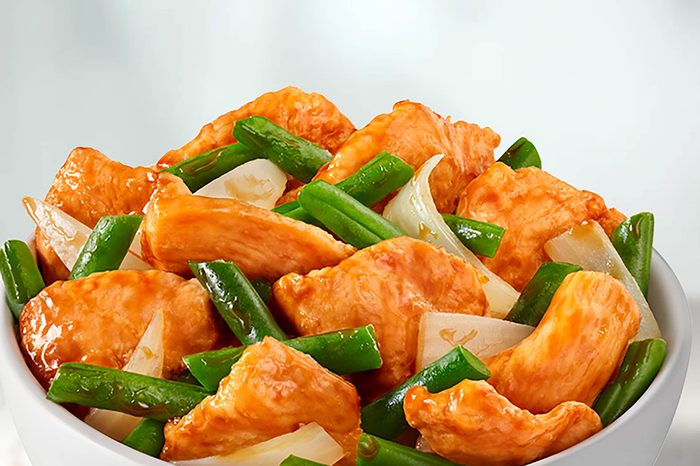
Panda Express: String Bean Chicken Breast
As a registered dietitian, I’m always on the lookout for healthy dishes I can grab on the go. And if you’re looking for the highest-fiber entrée on the menu, this healthy Chinese food option is for you. This dish boasts 4 grams of fiber with less than 600 mg of sodium. String beans are good sources of vitamin A, vitamin C, and even iron. The sauce, loaded with health-boosting ginger, provides anti-inflammatory benefits. At only 190 calories per serving, this chicken entrée is a smart choice.
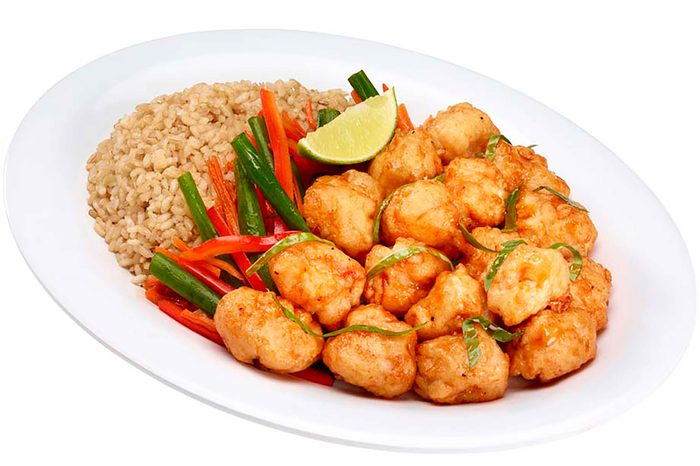
Pei Wei: Thai Dynamite with Steamed Shrimp
Spicy and satisfying, the small serving of this entrée contains only 295 calories. Thai basil contains vitamin C and other antioxidants, adding a unique flavor to the shrimp. Opting for the steamed version over fried saves tons of fat calories (about 200!). Swapping lettuce cups for rice saves about 250 calories. Sriracha sauce contains capsaicin, shown to boost metabolism and improve mood and memory. Total winner! Find out the 17 “healthy” foods you should avoid.
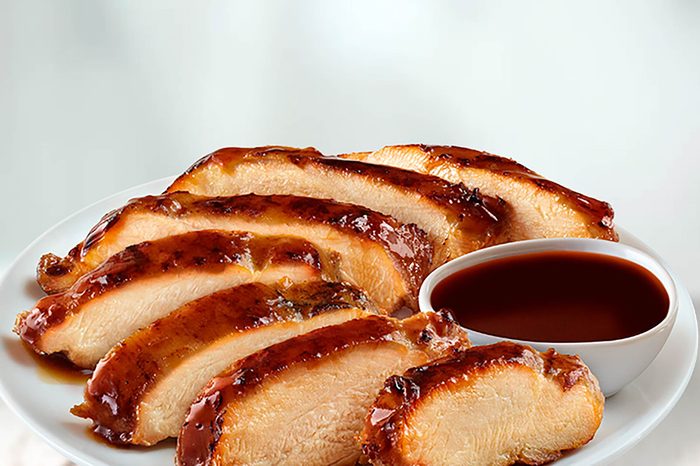
Panda Express: Grilled Teriyaki Chicken
This popular standby still ranks as a healthy Chinese food choice due to its simplicity. One grilled breast contains 300 calories and 36 grams of protein. Add in the high-fiber super greens—broccoli, kale, and cabbage—and you’re getting a well-balanced meal. Broccoli, rich in vitamin C, give an additional nutrition boost.
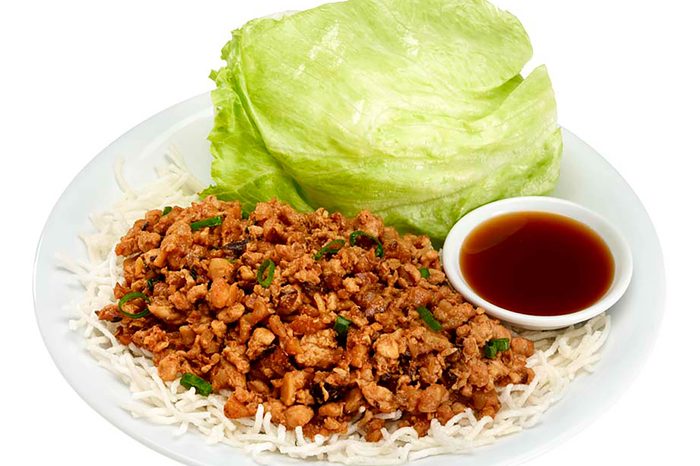
Pei Wei: Signature Chicken Lettuce Wraps
Definitely one of their most popular appetizers, but how about making this your meal? These savory spicy lettuce wraps are 810 calories, with 34 grams of protein. The 7 grams of fiber will help fill you up. If you skip the sauce, you’ll cut the sodium content by half. Mint adds a unique flavor to these wraps, as well as delivering the antioxidant rosmarinic acid, which reduces inflammation. Don’t miss the healthiest fast-food options at these popular restaurants.
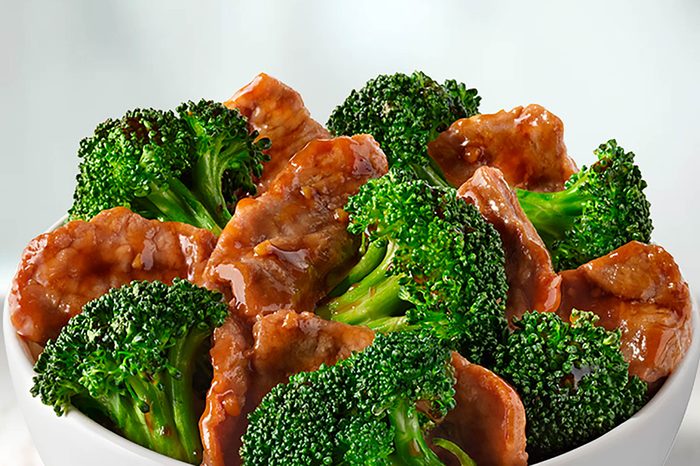
Panda Express: Broccoli Beef
Super rich in vitamin C, broccoli plays the main role here, with lean savory beef as the accompaniment. At only 150 calories, it’s a smart, healthy Chinese food choice; also, it’s lower in sodium and fat than many other dishes (about 520 mg sodium and 7 grams fat). Even if you include steamed brown rice as the side dish, your meal is less than 600 calories and filling.
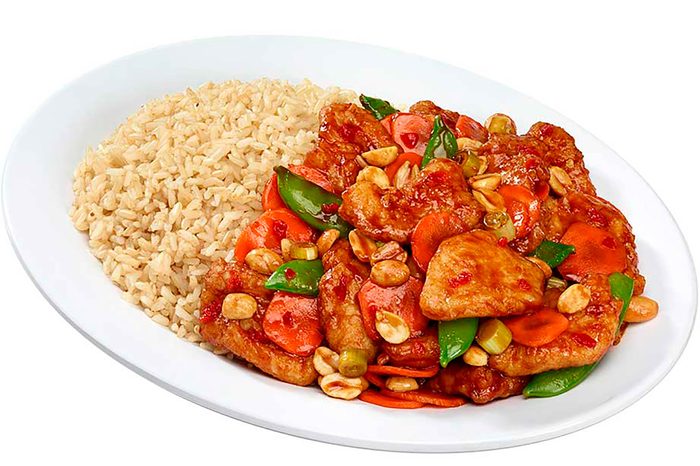
Pei Wei: Kung Pao Steamed Shrimp
Traditional Kung Pao is loaded with fat from frying. But if you choose this steamed version with lean shrimp, you’ll save about 300 calories and nearly 20 grams of fat. You still get to enjoy the peanuts, rich in healthy monounsaturated fatty acids, vitamin E, and resveratrol, which offers plenty of health benefits like reducing heart disease risk. The antioxidants in garlic reduce high blood pressure and improve immunity.
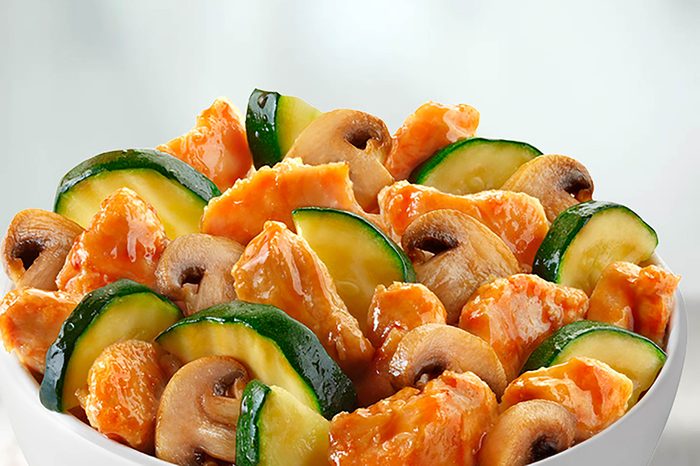
Panda Express: Mushroom Chicken
Hard to believe that a restaurant meal can be less than 250 calories, but this healthy Chinese food combo hits that target: Loaded with healthy mushrooms, this chicken dish contains 170 calories; when paired with the super greens side, it’s 250 total calories in the bowl. Packed with fiber (5g), the mixed veggies contain cabbage, rich in antioxidants phytochemicals like thiocyanates, indole-3-carbinol, lutein, zeaxanthin, sulforaphane, and isothiocyanates—all molecules known to protect against certain cancers and heart disease. Learn the 9 foods nutritionists never order from fast-food restaurants.
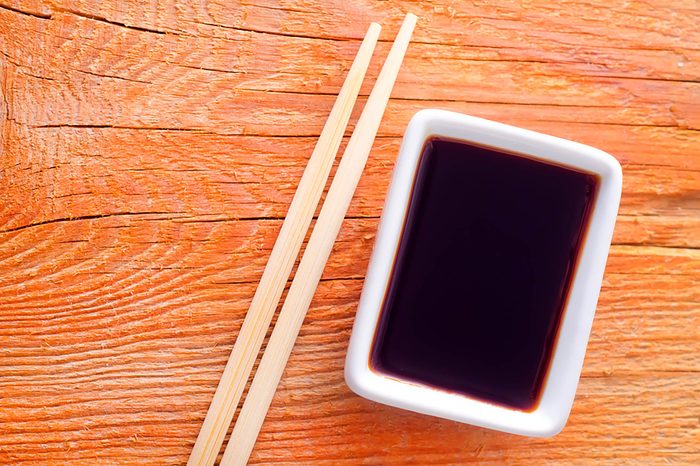
Light sauces, please
A few adjustments to your favorite dish can improve the nutritional profile of your meal without sacrificing taste. Go light on the sauce, or skip it altogether. Consider that one little packet of soy sauce includes 375mg of sodium; an ounce of teriyaki or sweet and sour sauce contains 70 calories. You’re better off going with the hot mustard (115 mg sodium and 10 calories), or hot chili sauce (125 mg sodium and 10 calories).
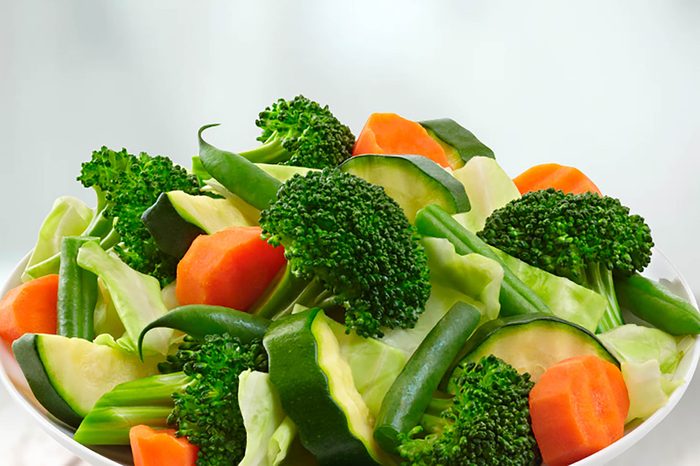
Best side dishes
Swap the rice for veggies or lettuce cups: Fried rice contains a whopping 520 calories, but the mixed veggies are 80 calories and lettuce cups are about 30 calories. At Pei Wei, choose the quinoa over rice. As a side, the quinoa has double the protein content of the rice. Can’t live without rice with your Chinese food? Opt for brown to get a bit more fiber, and try to limit yourself to half of the serving provided. A bowl of hot and sour soup contains about 180 calories—with tofu, it’s protein-rich and low in saturated fat. Tofu contains healthy probiotics, like these foods.
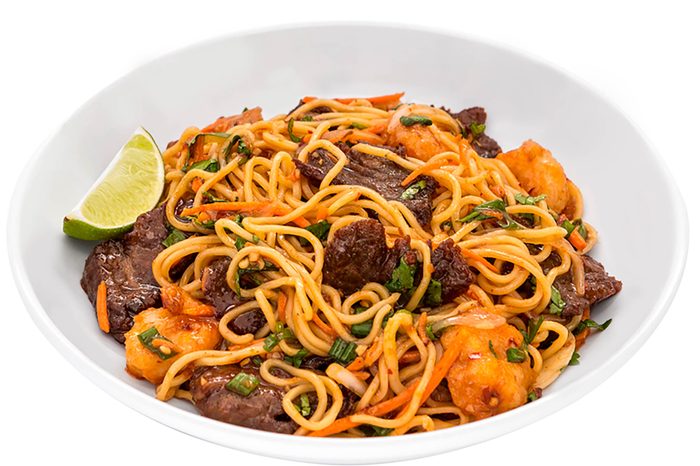
And what to avoid
Skip the noodle bowls altogether—most on the Pei Wei menu were more than 1,000 calories per serving. Sushi can be a healthy choice, with lean meat and some veggies, but skip the varieties with “crunch” in the description—they’re loaded with breadcrumbs. Best bets are the spicy tuna or mango California rolls (less than 200 calories for a 4 piece serving). Next, check out the 50 best healthy eating tips of all time.

